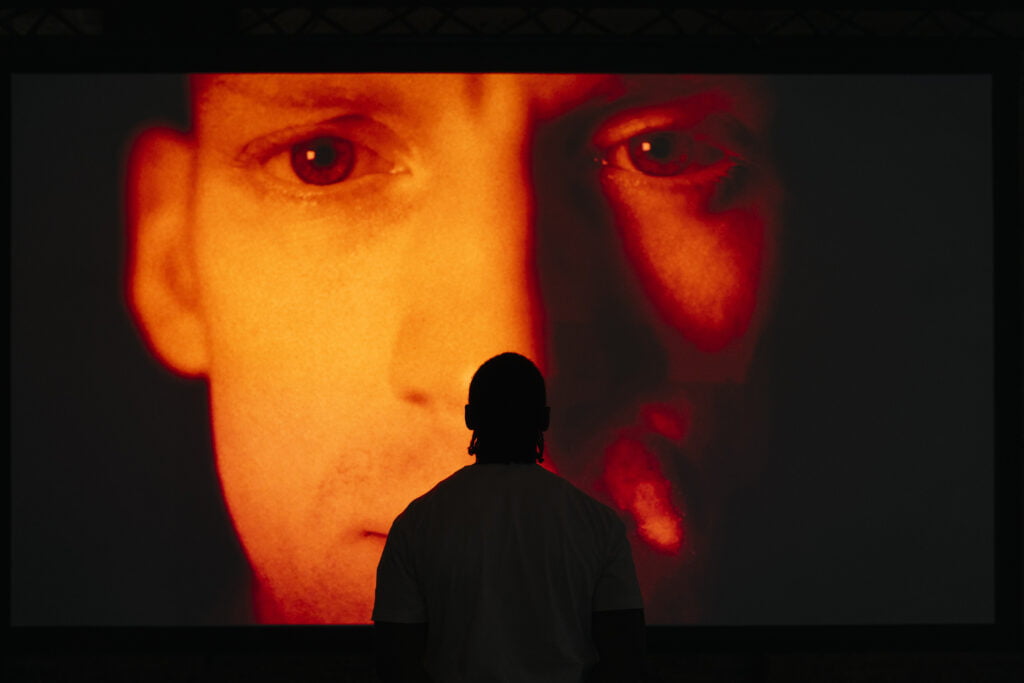
Photo by Drew Forsyth © Manchester Collective
I lived in Manchester for years and now come back very often to see my family. It’s one of a few places that feels like home – there is a familiar warmth, even a cosiness despite its size and continuous rapid growth, bulging out of the old boundaries. When I heard about ‘Dark Days Luminous Nights’, the product of a collaboration between Manchester Collective and local artists Simon Buckley and Blackhaine, I jumped at the chance to see the city I know so well from a fresh, audio-visual perspective.
Walking into the dark, slightly crumbling interior of The White Hotel, I was met by light boxes on every wall, displaying the work of photographer Simon Buckley. The images showed Manchester at night lit up by strong artificial light and helped by long exposures. They capture passing trams, deserted streets at dusk, and the ever-present greenery amongst the dilapidated buildings, all somehow always dwarfed by enormous skyscrapers, towering over or peering from the distance. The light was beautiful and otherworldly, but my immediate thought was that these places are just so very ugly. There is a romantic air to portraying them at night, still and subdued, elevated by the bright lights, but this does not erase the way in which they are simply not at all inviting. Yet it is those corners of the city that are perhaps most familiar.
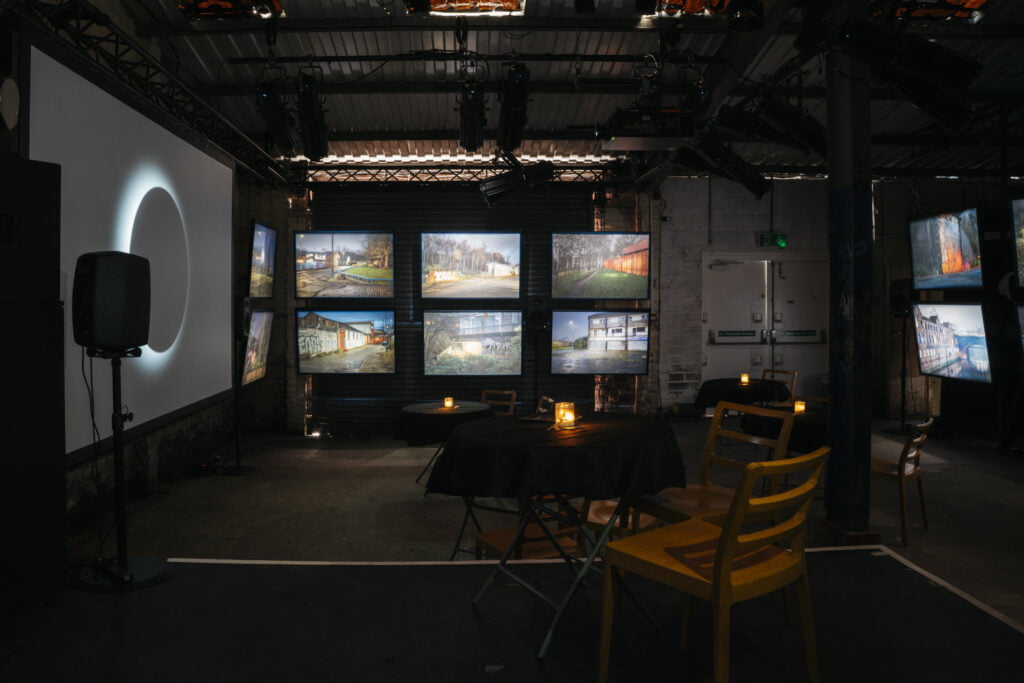
Photo by Drew Forsyth © Manchester Collective
The main event consisted of a filmed performance from Lancashire-based performer and choreographer Blakchaine, accompanied by three other actors (including Rakhi Singh, Manchester Collective’s Music Director) in the middle of a Manchester night. Divided into three acts, the camera follows the striking, tall, bald man as he jerks and punches his way through the streets and tunnels. He’s holding a red light, which illuminates his way and his silhouette.
There is a gothic air to those scenes, a long shadow on a brick wall emerging from the red light is not unlike the German Expressionist films of the 1920s, like Nosferatu is creeping up a staircase. In fact, Blackhaine’s long limbs and beautiful features exaggerated by the light would not be out of place in a film from 100 years ago. His movements are aggressive and unpredictable but remain within the realm of dance or at the very least, a flow without straying into violence. He follows the three young people holding tiny torches. No words are ever said, the three look like nocturnal tourists, bored urban explorers who look around without much expression. They’re not really scared, maybe just curious and mildly inconvenienced.
Walking along the ancient but now neglected River Irk, the storyline is not clear: the situation seems to sway between an outright chase and an uneasy night-time walk with a somewhat unwanted companion in the form of the man with the red light. The light itself seems to be a character in the film – the corners of buildings illuminated by the cold glow of empty offices, flashing traffic lights and torch beams stroking the bushes and weeds trembling on the side of the road. It is a strange love letter to the city at night, far from the clichéd portrayals of Manchester’s perfectly still skyline.
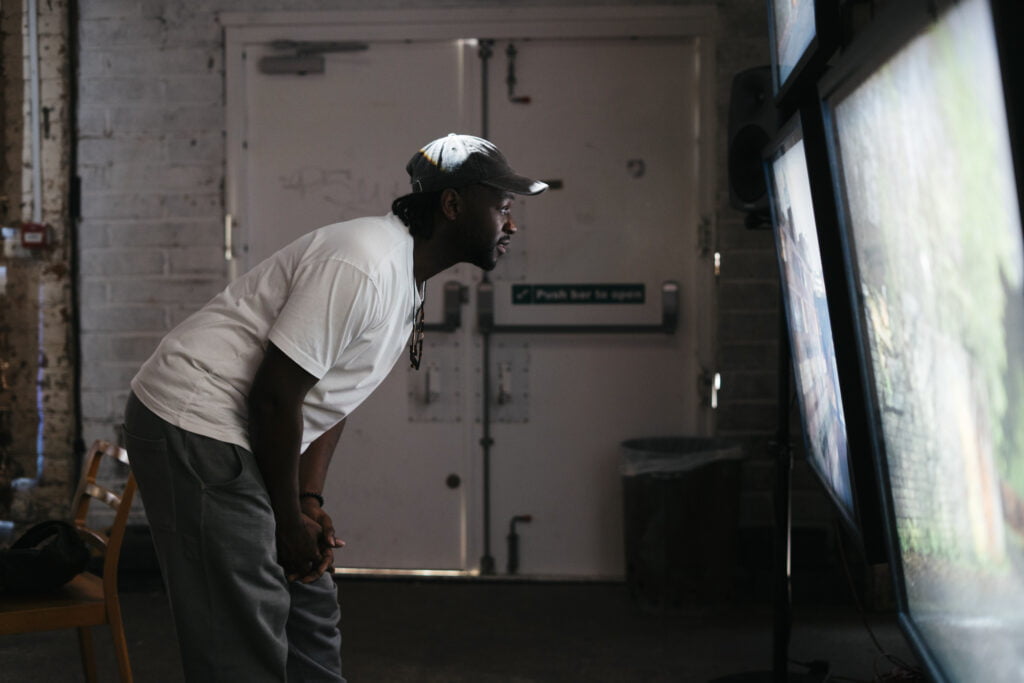
Photo by Drew Forsyth © Manchester Collective
While the inspiration for the piece was loosely based on musings on the ongoing gentrification of the city, for me Blakchaine’s movements immediately bring to mind an embodiment of hatred: towards himself, towards the space he find himself in, towards the night and the darkness, as though he was trying to leave his body, rip it apart by forcing it to move in the most unnatural ways. Perhaps he is cleansing an emotion, purging his body of an energy that seems to come in waves and take over. There is something so genuine about it that I wonder if the performer himself found it to be a healing process – either way he does an incredible job of oozing rawness, his tortured expression stays with the viewer long after the film ends.
Now, the music. Oh my, the music! Where the visuals raise questions, the music provides the intensity of emotion. Performed, of course, by Manchester Collective, the soundtrack by Béla Bartók, Wojciech Kilar and Edmund Finnis rises and falls throughout. It does not diminish the power of the film, but the tension it creates is greater than any single visual could ever achieve. The relentlessly growing tones seem to buzz under your eyelids, seep into your mind, like someone pouring ice-cold water down your ear but you don’t really want it to stop. It’s grand, unsettling and memorable.
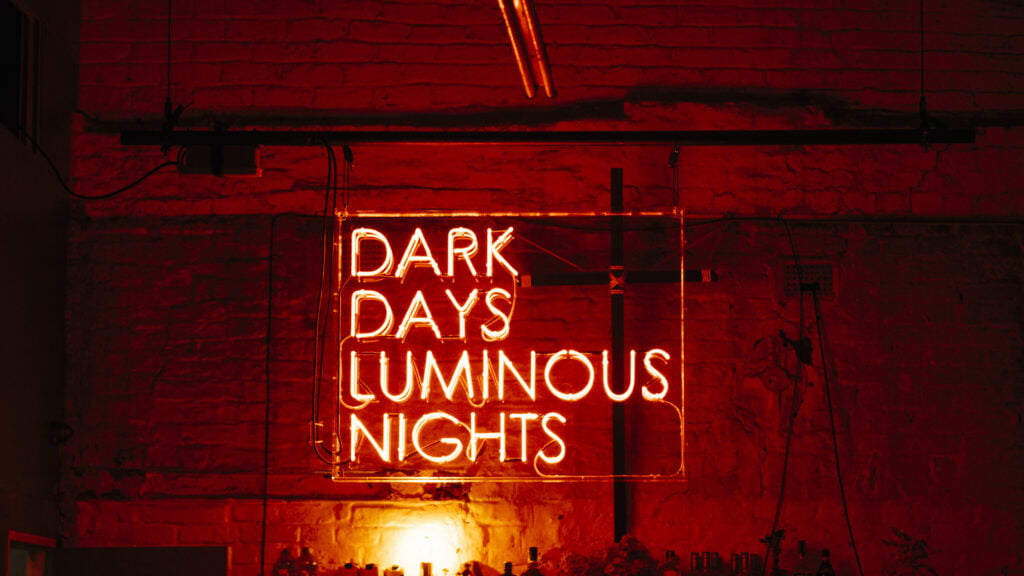
Photo by Drew Forsyth © Manchester Collective
Experiencing the film as a former resident of the city, it feels almost too familiar – the drama of the scenes is sometimes overshadowed my own thoughts about the last time I’ve been in one of these locations. Perhaps I never have, but the air of abandonment is all too recognisable.
We may not be able to enjoy Manchester Collective’s live performances just yet, but ‘Dark Days Luminous Nights’ is the just the right thing to see immediately out of the confines of a winter lockdown. Despite the fresh spring air and a sense of freedom, there is a darkness lurking in the back of our minds, an uncertainty that is hard to express. ‘Dark Days Luminous Nights’ pulls you right into the centre of all that is raw, murky and uncomfortable, and shows you a way through, while quite literally shining a light on a certain kind of beauty where you least expect it.
Filed under: Art & Photography
Tagged with: Béla Bartók, choreography, city, dance, darkness, Gentrification, manchester, Manchester Collective, music, night, nighttime, performance, River Irk, urban, Wojciech Kilar. Edmund Finnis
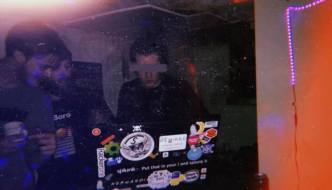
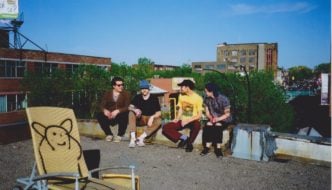
Comments